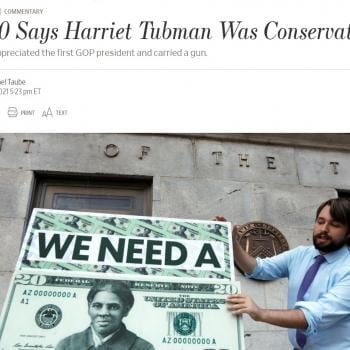Some commenters on my pro-life movement post expressed skepticism that I could have so changed my mind so thoroughly over one lunch and one set of statistics. And so I asked myself: How did my perspective change so completely and so suddenly? What was it that so challenged how I had viewed the issue before, and exactly what changed and why? In this post I further hash out what went on in my mind that day, and explain the paradigm shift I underwent.
 At that time I had been pro-life my entire life and had spent the previous year as president of my local Students for Life chapter. During the entire time my goal had been to see abortion banned. At pro-life banquets and in discussion with other pro-life individuals, there was always talk of overturning Roe. That was the goal. Overturn Roe, ban abortion, problem solved. Another thing I had always been told was that the number of illegal abortion performed before Roe was grossly exaggerated. I thus saw discussion of illegal abortions as a smokescreen, and felt sure that if we could overturn Roe and then ban abortion, we would solve the problem and abortion would virtually disappear overnight. And while we held overturning Roe as our ultimate goal, we saw restrictions like waiting periods and parental consent as legal steps we could take in the meantime.
At that time I had been pro-life my entire life and had spent the previous year as president of my local Students for Life chapter. During the entire time my goal had been to see abortion banned. At pro-life banquets and in discussion with other pro-life individuals, there was always talk of overturning Roe. That was the goal. Overturn Roe, ban abortion, problem solved. Another thing I had always been told was that the number of illegal abortion performed before Roe was grossly exaggerated. I thus saw discussion of illegal abortions as a smokescreen, and felt sure that if we could overturn Roe and then ban abortion, we would solve the problem and abortion would virtually disappear overnight. And while we held overturning Roe as our ultimate goal, we saw restrictions like waiting periods and parental consent as legal steps we could take in the meantime.
And yes, we did other things besides talk of banning Roe. We donated to our local Crisis Pregnancy Center, and participated in the annual Life Chain. I knew people who volunteered as counselors at our CPC (though I never did myself) and people who worked to reach women entering abortion clinics (though I never did that either), and we always knew that our CPC had a need for extra baby clothes or lightly-used cribs. In other words, in addition to the ultimate focus on banning Roe we also worked to talk women out of having abortions.
 But I never, ever heard things like fighting poverty, working toward a comprehensive social safety net, advocating for comprehensive sex education, or working to make birth control more widely-used or effective put forward as strategies for reducing the number of abortions that took place. In contrast, every pro-lifer I knew was politically conservative and in opposition to things like welfare, mandated paid maternity leave, subsidized daycare, and even things like Head Start. In addition, the emphasis of the pro-life movement was on promoting abstinence. I remember being at one pro-life banquet where a group of abstinence educators gave a talk about their work. They talked about how they told the children in the schools they went to that contraception had an extremely high failure rate and that if they had sex with someone that would reduce their ability to bond with someone else in the future. We all clapped approvingly. And beyond this, I also was taught that hormonal birth control itself actually caused abortions by causing a woman’s body to expel fertilized eggs. In other words, birth control was discouraged, not encouraged.
But I never, ever heard things like fighting poverty, working toward a comprehensive social safety net, advocating for comprehensive sex education, or working to make birth control more widely-used or effective put forward as strategies for reducing the number of abortions that took place. In contrast, every pro-lifer I knew was politically conservative and in opposition to things like welfare, mandated paid maternity leave, subsidized daycare, and even things like Head Start. In addition, the emphasis of the pro-life movement was on promoting abstinence. I remember being at one pro-life banquet where a group of abstinence educators gave a talk about their work. They talked about how they told the children in the schools they went to that contraception had an extremely high failure rate and that if they had sex with someone that would reduce their ability to bond with someone else in the future. We all clapped approvingly. And beyond this, I also was taught that hormonal birth control itself actually caused abortions by causing a woman’s body to expel fertilized eggs. In other words, birth control was discouraged, not encouraged.
During all my time in the pro-life movement I had never actually seen numbers on abortion rates in other countries. Never. The only times we discussed abortion globally was to condemn the World Health Organization for funding abortions in other countries and to support the Mexico City Policy prohibiting U.S. money from being used to fund overseas abortions, and also to condemn China’s policy of forced abortions. That was it. I had never seen numbers comparing rates in the various countries, had never seen a listing of the restrictiveness of the laws in each country, etc. In fact, because I had been led to believe that birth control increases the abortion rate by increasing the amount of sex that takes place and through its failure rate resulting in the conception of babies almost certain to be aborted, I assumed that sexually liberal Western Europe, with its legalization of abortion, would have a really high abortion rate (I knew Western Europe had legal abortion because that was on the list of evils about Western Europe that I heard as a political conservative, alongside socialism).
And then I saw the New York Times article reporting on global numbers of abortion, and discussing these numbers in tandem with each country’s restrictions on abortion. Remember that I had never seen these numbers or even heard them discussed. What these numbers told me was that the legality of abortion was not the primary factor effecting the rate of abortions. There were other factors at work. Why was it that sexually liberal Western Europe, where abortion was legal, had the lowest abortion rate in the world? And why was it that Africa and South America, where abortion was banned in nearly every country, had the highest abortion rates? I realized immediately that these questions were crucially important if one wanted to bring down the abortion rate. It was an epiphany moment. And yet, these were questions I had never heard asked in the pro-life movement.
The other thing I realized is that I had never really considered the reasons women have abortions. I had instead simply repeated the line that “women use abortion as birth control.” When I found that a full 75% of women getting abortions in the U.S. cite their inability to afford to raise a child as one reason they seek out abortions, I was surprised. I know it might seem strange, but I had never really looked at the reasons why women have abortions. My focus had been on restricting abortions and doing whatever possible to talk women out of having abortions. Now, I knew that women had abortions because they didn’t want to be pregnant or have a baby, but my response there – and the response I always saw made by the pro-life movement – was simply that people shouldn’t have sex if they didn’t want to get pregnant. The statistics on Western Europe suggested that if my goal was to decrease the number of unintended pregnancies I needed to put birth control back on the table.
 That day I moved away from trying to stop people from having abortions and toward addressing the reasons women have abortions. Things like unintended pregnancies and poverty, for instance. You see, I realized that stopping women from having abortions might save unborn babies from murder but did very little to address the reasons why women would seek out abortions in the first place. I realized that if the focus could move toward decreasing unintended pregnancies and making sure that women could afford to raise children, well, I could both prevent the murders of unborn babies, and improve women’s circumstances and lives.
That day I moved away from trying to stop people from having abortions and toward addressing the reasons women have abortions. Things like unintended pregnancies and poverty, for instance. You see, I realized that stopping women from having abortions might save unborn babies from murder but did very little to address the reasons why women would seek out abortions in the first place. I realized that if the focus could move toward decreasing unintended pregnancies and making sure that women could afford to raise children, well, I could both prevent the murders of unborn babies, and improve women’s circumstances and lives.
And yes, this change took place over one lunch on one day, though I of course went on processing the issue for days and weeks afterwards. It really was like a switch had been flipped. It was a paradigm shift. It was an “aha” moment that changed the entire way I approached the issue. And that was huge.














